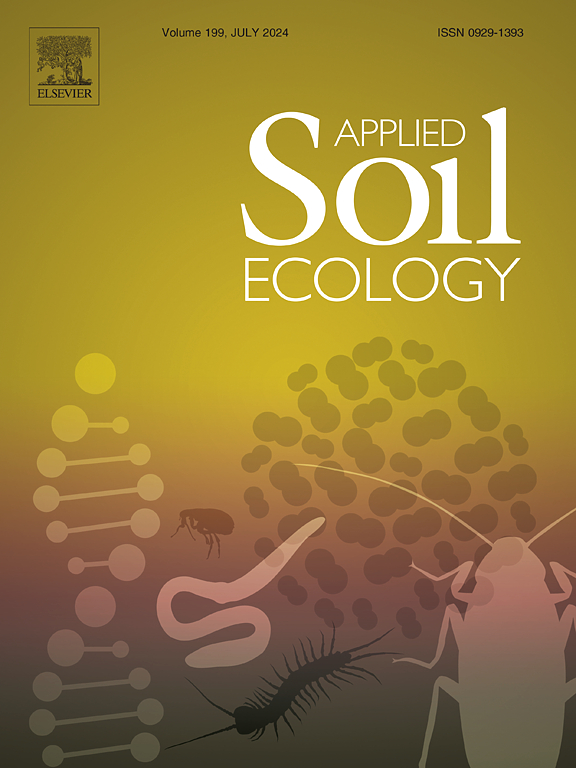Complementary nitrogen use by legume and grass enhances plant productivity irrespective of earthworm species
IF 4.8
2区 农林科学
Q1 SOIL SCIENCE
引用次数: 0
Abstract
Plant mixtures typically lead to higher productivity compared to monocultures. Yet, most studies on plant mixtures focus on aboveground interactions, while little attention is given to interactions below the ground. Earthworms are key components of the belowground subsystem and are closely associated with plant roots; however, how different earthworm species affect the direction and strength of plant mixture - productivity relationships remains largely unclear. We conducted a microcosm study including monoculture legume, monoculture grass and legume-grass mixture as well as five earthworm species. To specifically focus on earthworm - plant root interactions, leaf litter was excluded from the microcosms. Plant mixtures increased the productivity of both legumes and grasses by 3.56 g (65.0 %) and 0.60 g (139.5 %) dry mass per plant individual, respectively, likely due to the complementary nitrogen use by legumes and grasses [10.20 g (58.0 %) and 0.43 g (173.6 %) higher total amount of nitrogen in individual plants in mixture, respectively], but potentially also due to less competition for other resources such as light and water, particularly for legumes, as also supported by a lower microbial water stress indicator (cy/pre, ratio of cyclopropyl phospholipid fatty acids to its monoenoic precursors) in plant mixture. In addition, grasses enhanced the microbial activity as shown by higher microbial specific respiration (10.24 ± 0.34, 11.44 ± 0.44 and 12.30 ± 0.42 μl O2 mg−1 Cmic h−1 for the legume, grass and mixture treatments, respectively), thereby maximizing nitrogen uptake in plant mixtures. While the increase in plant growth was rather uniform, earthworm species differentially affected nitrogen uptake of both legumes and grasses, with Allolobophora chlorotica facilitating nitrogen uptake of plants more than other earthworm species, especially in grass monocultures [0.09 g (35.5 %) higher amount of total nitrogen in individual plants in presence of A. chlorotica compared to other earthworm species]. Overall, our study highlights the general importance of plant mixtures for sustainable agriculture, but also points to earthworm-specific effects on plant nitrogen uptake that can mitigate the poor performance of grass monocultures.
求助全文
约1分钟内获得全文
求助全文
来源期刊

Applied Soil Ecology
农林科学-土壤科学
CiteScore
9.70
自引率
4.20%
发文量
363
审稿时长
5.3 months
期刊介绍:
Applied Soil Ecology addresses the role of soil organisms and their interactions in relation to: sustainability and productivity, nutrient cycling and other soil processes, the maintenance of soil functions, the impact of human activities on soil ecosystems and bio(techno)logical control of soil-inhabiting pests, diseases and weeds.
 求助内容:
求助内容: 应助结果提醒方式:
应助结果提醒方式:


